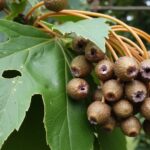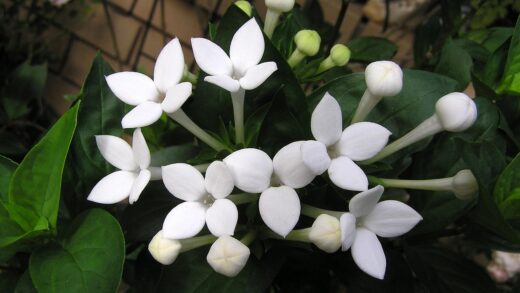As a broadleaf evergreen, cherry laurel retains its foliage throughout the winter, providing valuable structure and color to the dormant garden. However, this very feature makes it susceptible to specific types of winter damage. Successfully overwintering these shrubs, particularly in colder climates or exposed locations, requires a proactive approach that begins with preparations in the autumn. The goal is to ensure the plant enters the winter period fully hydrated and prepared to withstand challenges such as frozen ground, drying winds, and heavy snow or ice loads. Proper care can make the difference between a plant that emerges in spring vibrant and healthy, and one that is struggling with significant browning, dieback, and stress.
The primary challenge for a broadleaf evergreen like cherry laurel during winter is moisture balance. On sunny or windy winter days, the leaves continue to lose water through transpiration. However, if the ground is frozen solid, the roots are unable to absorb any moisture to replace what is lost. This deficit leads to desiccation, or drying out, of the leaf tissues, which results in the characteristic brown or “burned” appearance known as winter burn. This is not caused by the cold itself but by the lack of available water.
Another significant threat is physical damage from the weight of heavy snow and ice. The broad leaves of cherry laurel can catch and accumulate large amounts of frozen precipitation. This weight can put immense strain on the branches, causing them to bend, split, or break entirely. Young or newly planted shrubs are particularly vulnerable, as their branch structure is not yet as strong and established. Taking preventative steps to protect the plant from this mechanical stress is an important part of a comprehensive winter care strategy.
Ultimately, the successful wintering of cherry laurel depends on a combination of factors. These include choosing a cultivar that is appropriate for your climate’s hardiness zone, selecting a suitable planting location that offers some protection from the harshest winter elements, and undertaking specific preparatory tasks in the autumn. By understanding the challenges the plant faces during the winter months, you can provide the necessary support to ensure it weathers the season with minimal damage and is ready for vigorous growth when spring arrives.
Understanding winter hardiness in cherry laurels
Winter hardiness refers to a plant’s ability to survive the minimum winter temperatures of a specific geographic region. This is most commonly measured using a system of hardiness zones, which are based on the average annual extreme minimum temperature. Different cultivars of cherry laurel have varying degrees of cold hardiness. For example, some common English laurel varieties are reliably hardy to zone 6, while other more cold-tolerant selections, such as ‘Otto Luyken’ or the Schipka laurel (Prunus laurocerasus ‘Schipkaensis’), can often survive in zone 5. It is crucial to select a cultivar that is rated for your specific hardiness zone or colder to ensure its survival.
However, hardiness is more complex than just tolerance to a minimum temperature. It also involves the plant’s ability to withstand other winter stresses, such as fluctuating temperatures, drying winds, and frozen soil. A plant’s health going into winter plays a massive role in its ability to endure these conditions. A well-established, healthy shrub that has been properly watered and nourished throughout the growing season will have more energy reserves and be far more resilient to winter stress than a plant that is already weakened by drought, disease, or nutrient deficiency.
The process of acclimation is also a key part of winter hardiness. As autumn progresses, decreasing day length and gradually cooling temperatures trigger physiological changes within the cherry laurel. The plant slows its growth, and the chemical composition of its cell sap changes to act as a kind of natural antifreeze, which helps to protect the plant tissues from damage caused by ice crystal formation. This is why a sudden, early hard freeze in the autumn can be much more damaging than even colder temperatures in the middle of winter, as the plant has not had sufficient time to fully acclimate.
It is also important to understand that microclimates within your own garden can significantly affect a plant’s winter survival. A location on the south side of a house may be several degrees warmer and more protected than an exposed site in the middle of a lawn. Planting a cherry laurel in a spot that is sheltered from the prevailing north and northwest winter winds can make a huge difference in preventing winter burn. Considering these microclimates allows you to push the boundaries of a plant’s rated hardiness zone and increase its chances of thriving.
Preparing the plants for winter
Preparation for winter should begin in the late summer and early autumn. One of the most important steps is to cease all fertilization by mid-summer. Applying fertilizer, especially those high in nitrogen, late in the season encourages a flush of tender new growth. This new foliage and stem tissue will not have enough time to mature and “harden off” before the first frosts arrive. As a result, this succulent growth is extremely susceptible to being killed by the cold, which can lead to dieback and create weak points on the plant.
Watering is another critical component of winter preparation. While you should reduce the frequency of watering as the weather cools and plant growth slows, it is vital to ensure the soil is adequately moist before the ground freezes. Broadleaf evergreens like cherry laurel will continue to lose moisture from their leaves throughout the winter, so they need to enter the season with a fully hydrated root system. Provide several deep, thorough waterings in the autumn, especially if the season has been dry. A final deep soaking just before the first hard freeze is particularly beneficial.
Applying a fresh layer of organic mulch around the base of the plant in mid- to late autumn is an excellent preparatory step. A two- to four-inch layer of wood chips, shredded bark, or pine straw helps to insulate the soil. This insulation protects the roots from extreme temperature fluctuations and, most importantly, it can slow the freezing of the ground, allowing the roots to continue absorbing water for a longer period. The mulch should be pulled back a few inches from the main stem to prevent moisture from accumulating against the bark, which could lead to rot.
Finally, a thorough inspection of your cherry laurels in the autumn is a good practice. Look for and prune out any dead, damaged, or diseased branches. This clean-up removes potential overwintering sites for pests and disease pathogens. It also reduces the risk of these weakened branches breaking under the weight of snow or ice and causing further damage to the plant. This final check-up ensures the plant is in the best possible health as it heads into the challenging winter months.
Protecting against winter damage
One of the most effective ways to protect cherry laurels from winter damage is through the use of anti-desiccant or anti-transpirant sprays. These are waxy emulsions that are sprayed onto the foliage in late autumn when temperatures are still above freezing. The spray forms a thin, protective, semi-permeable film over the leaves. This film helps to reduce the amount of water lost through transpiration during sunny and windy winter days, thus preventing the leaves from drying out and developing winter burn. These sprays are particularly useful for newly planted shrubs or for those in exposed, windy locations.
For physical protection against both wind and heavy snow, constructing a temporary barrier can be very effective. This can be done by driving stakes into the ground around the plant and wrapping them with burlap or a specialized micro-mesh fabric. The barrier should be positioned to block the prevailing winter winds, typically on the north and west sides of the plant. It is important that the covering does not touch the foliage directly and that the top is left open to allow for air and light penetration. This simple screen can create a calmer microclimate around the plant and significantly reduce windburn.
To prevent branches from breaking under heavy snow or ice loads, you can provide structural support. For smaller, upright shrubs, you can gently tie the main branches together with soft twine or strips of cloth. This helps the plant shed snow more easily and prevents the branches from being splayed apart and breaking under the weight. For larger, multi-stemmed shrubs, it may be necessary to build a simple A-frame structure over the plant to deflect the snow. After a heavy snowfall, it is always a good idea to gently brush the accumulated snow off the branches with a broom, using an upward motion to avoid putting extra stress on them.
Protecting the base of the plant from animal damage is another consideration, especially in areas with significant rabbit or deer populations. In the winter, when other food sources are scarce, these animals may be tempted to browse on the foliage or gnaw on the bark of cherry laurels. A cylinder of hardware cloth or a plastic tree guard placed around the base of the shrub can effectively prevent this type of damage. The guard should be tall enough to extend above the expected snow line to provide protection throughout the season.
Care during and after the winter period
During the winter months, your role is primarily one of observation. There is little active care to be done, but it is wise to periodically check on your plants, especially after severe weather events like heavy snowstorms or ice storms. As mentioned, gently removing heavy snow accumulations can prevent branch breakage. If an ice storm has coated the branches, it is best to leave them alone. The ice is best left to melt naturally, as attempting to remove it will almost certainly cause more damage to the brittle, frozen branches.
It is also important to be mindful of de-icing salts used on nearby walkways, driveways, or roads. Salt spray kicked up by traffic or snowplows can drift onto the foliage of cherry laurels, causing significant chemical burn and dieback. Similarly, salt-laden runoff from melting snow can accumulate in the soil and damage the root system. If your plants are located near a treated area, consider using a burlap screen as a barrier. After the winter, if you suspect salt contamination, flushing the soil with plenty of fresh water in the early spring can help to leach the salts out of the root zone.
As spring approaches and the ground begins to thaw, resist the urge to immediately prune away any brown or damaged-looking foliage. It can sometimes be difficult to distinguish between truly dead branches and those that are merely damaged and may yet recover. It is best to wait until new growth begins to emerge on the plant. This will give you a clear indication of which stems are viable and which are permanently damaged and can be safely removed.
Once new growth is clearly underway, you can proceed with post-winter clean-up. Prune out all the winter-killed branches, making your cuts back to a point of healthy, green wood or a live bud. Rake away any fallen leaves or debris from around the base of the plant. This is also the time to apply a spring fertilizer and a fresh layer of mulch to help the plant recover from the stresses of winter and to fuel its new growth for the season ahead. A little patience in the spring can make a big difference in the plant’s recovery.


















